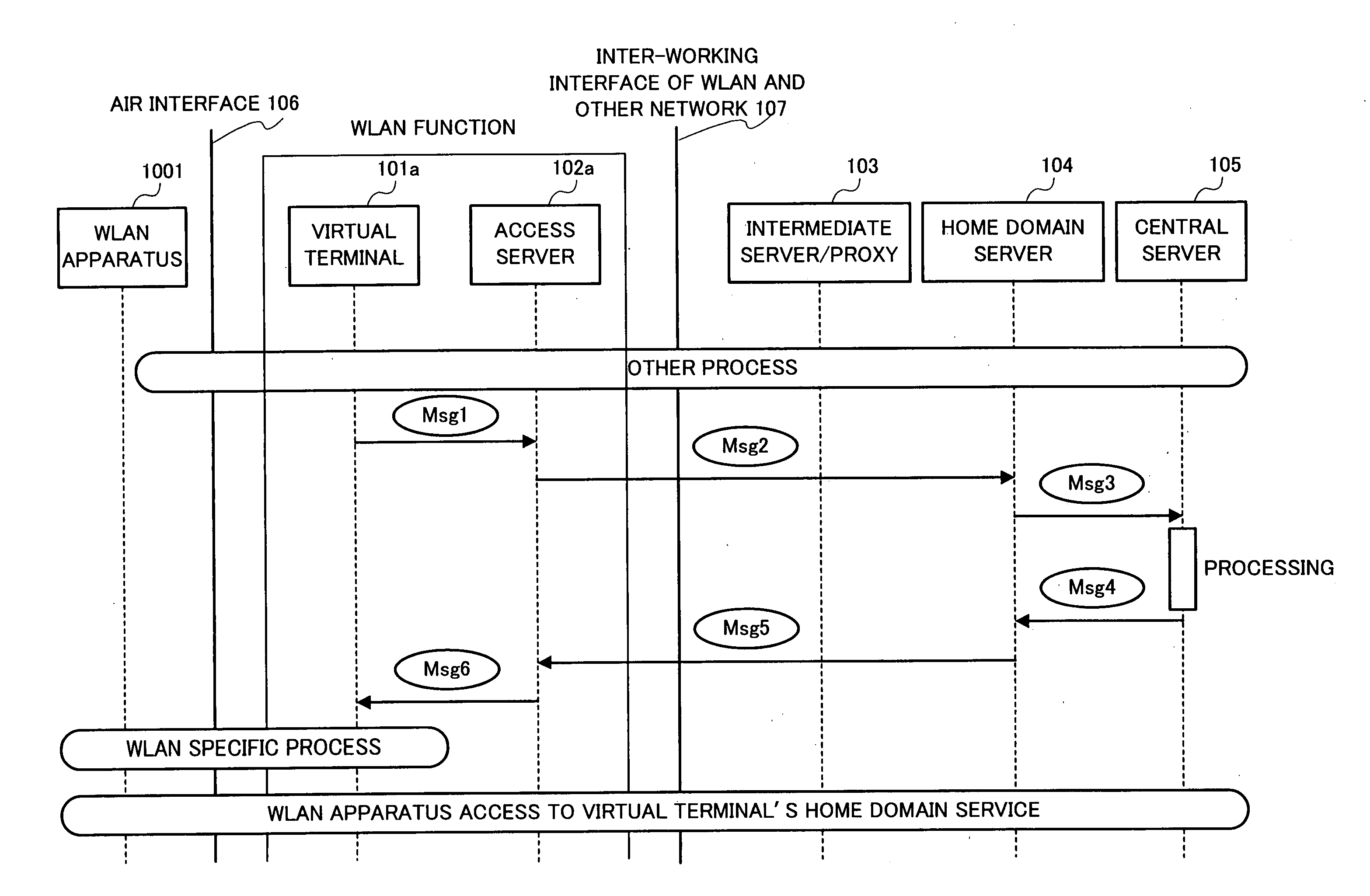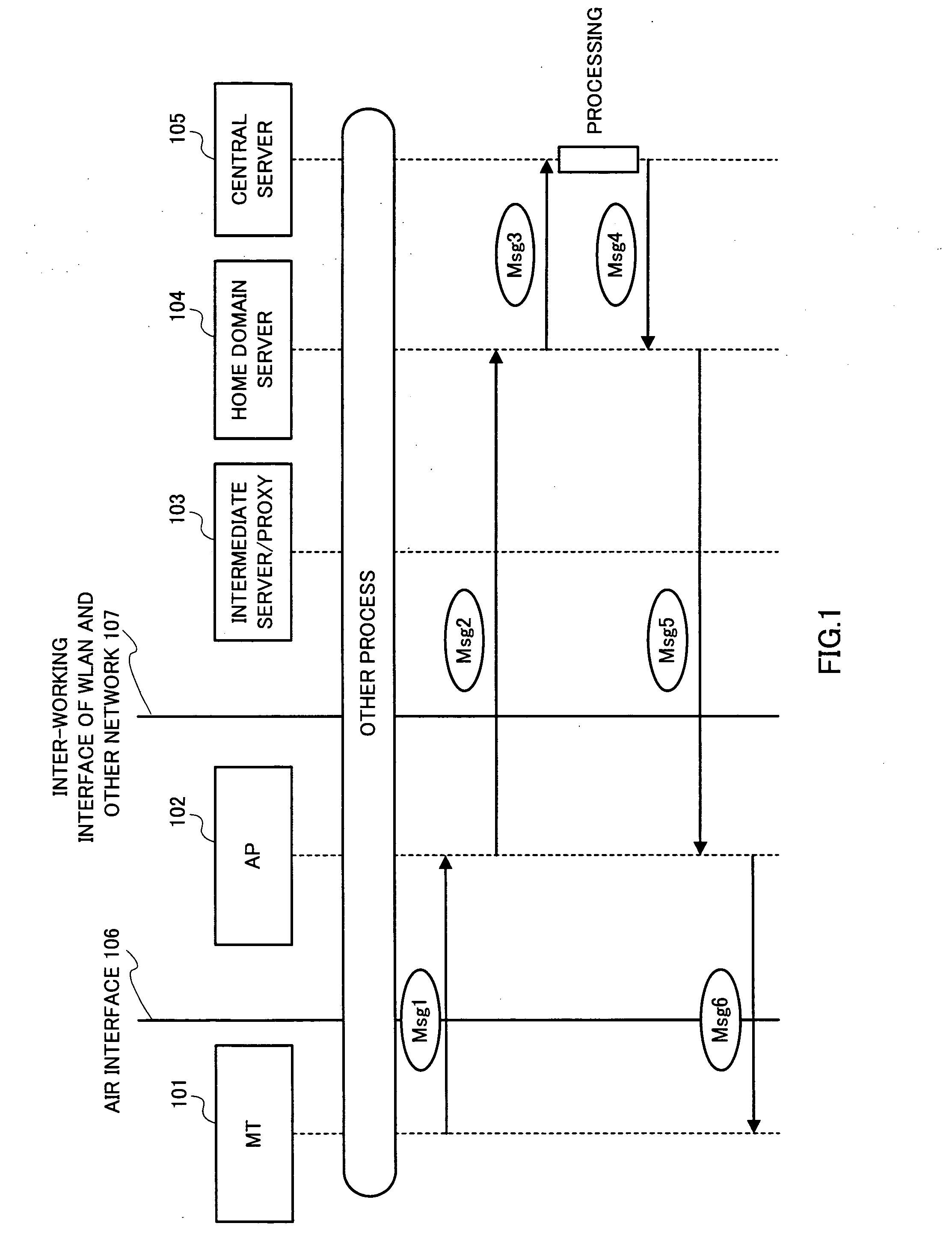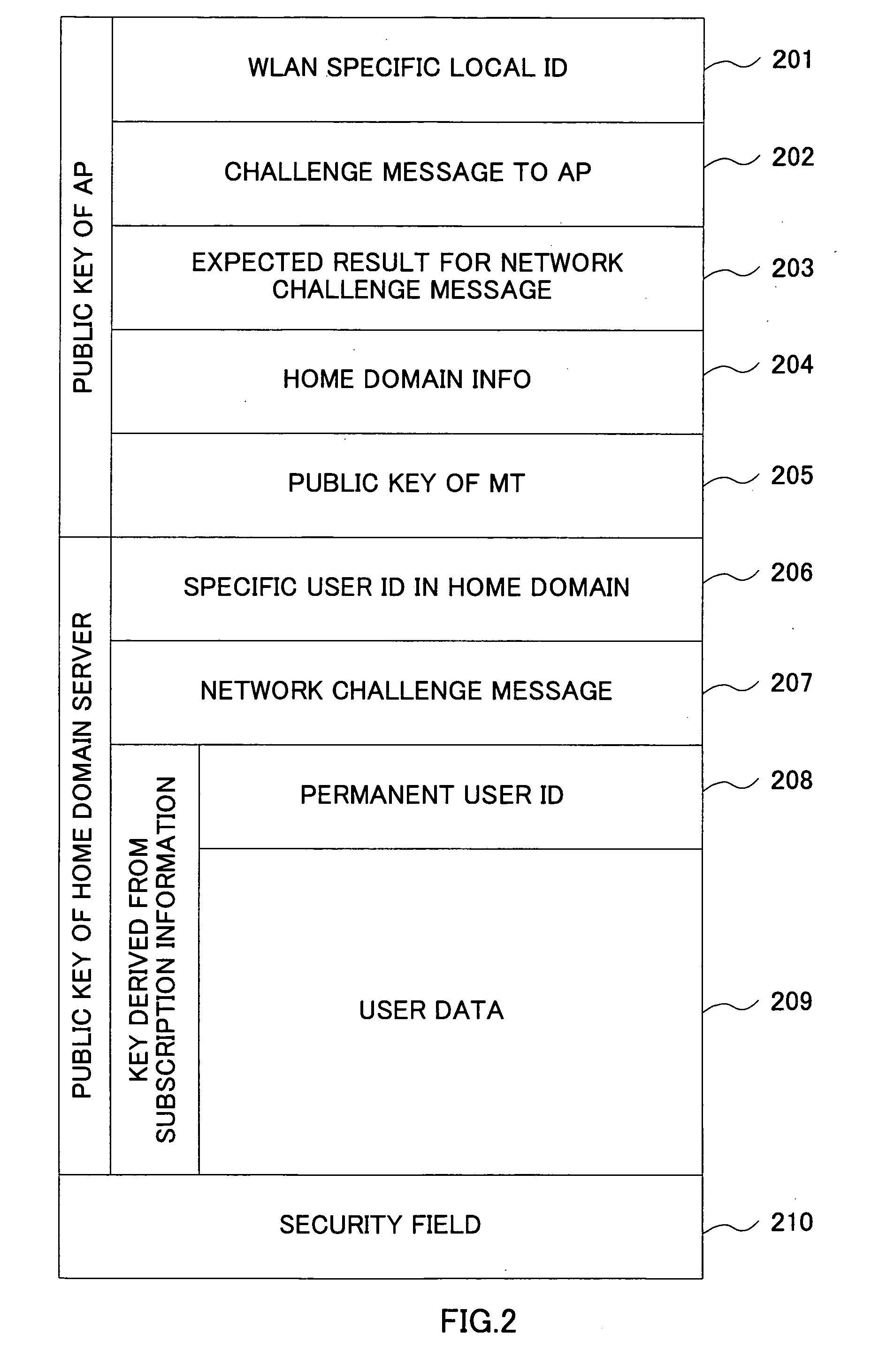Identification information protection method in wlan inter-working
- Summary
- Abstract
- Description
- Claims
- Application Information
AI Technical Summary
Benefits of technology
Problems solved by technology
Method used
Image
Examples
embodiment 1
[0050] For inter-working between the WLAN and other networks, a few major issues need to be solved. These include Authentication, Authorization, and Accounting (hereafter referred to as AAA), QoS provisioning, and mobility control. Large parts of the issues desire a policy-based solution, e.g. authorization / admission control, QoS and mobility function deployment, etc.
[0051] The present invention provides such a solution for those WLAN inter-working related problems using a policy-based framework. The network inter-worked with could be of any type, e.g. 3G Networks, another WLAN network, or some proprietary network.
[0052] In course of the inter-working message exchanges, the identification information of the mobile user is required to be provided for the AAA purpose. This information should be available only to the intended network elements (e.g. AAA server). Otherwise, the security of the network would be compromised, and user's location information would be revealed to possible m...
embodiment 2
[0131] In the inter-working, WLANs need to make decisions based on user subscription information, e.g. admission control, from time to time. Since this information is stored in the user's home domain, and is generally not allowed to be shared, WLANs have to rely on the Home Domain Servers (104) to issue decisions. Since the home domain might not always have the detail knowledge of the technologies used in different WLANs it inter-worked with, the Home Domain Servers (104) are not able to give exact instructions to the resource management entities in the WLANs. Also, some applications, e.g. admission control, require local network information, and prevent decision making in home domain.
[0132]FIG. 11 shows an example implementation of the present invention that solves the problem. In the framework, the Mobile Terminal, as marked by literal 801, is connected to the network through the WLAN functions. The WLAN functions include the Rule Engine, as marked by literal 802, and Rule Interp...
PUM
 Login to View More
Login to View More Abstract
Description
Claims
Application Information
 Login to View More
Login to View More - R&D
- Intellectual Property
- Life Sciences
- Materials
- Tech Scout
- Unparalleled Data Quality
- Higher Quality Content
- 60% Fewer Hallucinations
Browse by: Latest US Patents, China's latest patents, Technical Efficacy Thesaurus, Application Domain, Technology Topic, Popular Technical Reports.
© 2025 PatSnap. All rights reserved.Legal|Privacy policy|Modern Slavery Act Transparency Statement|Sitemap|About US| Contact US: help@patsnap.com



